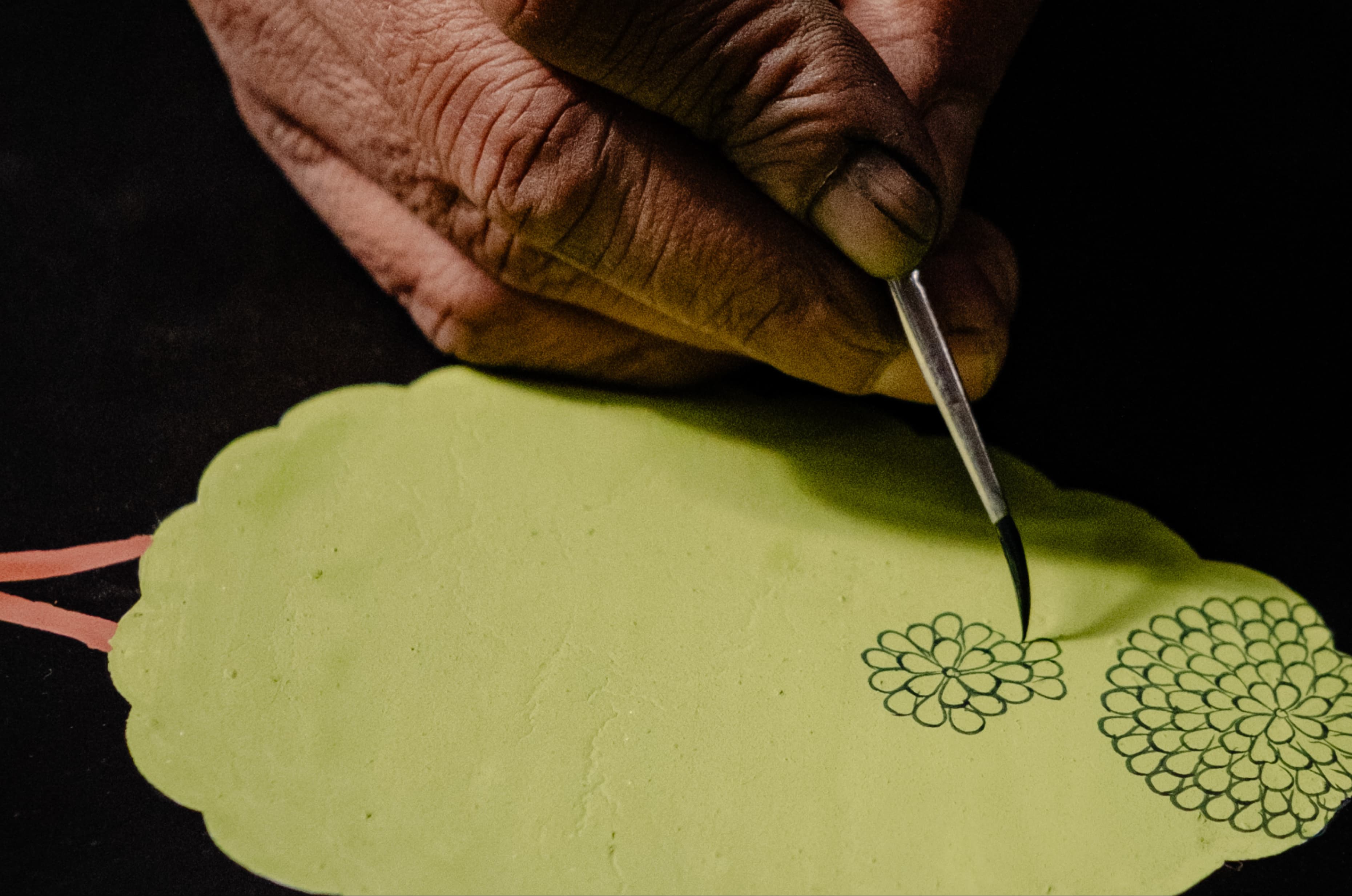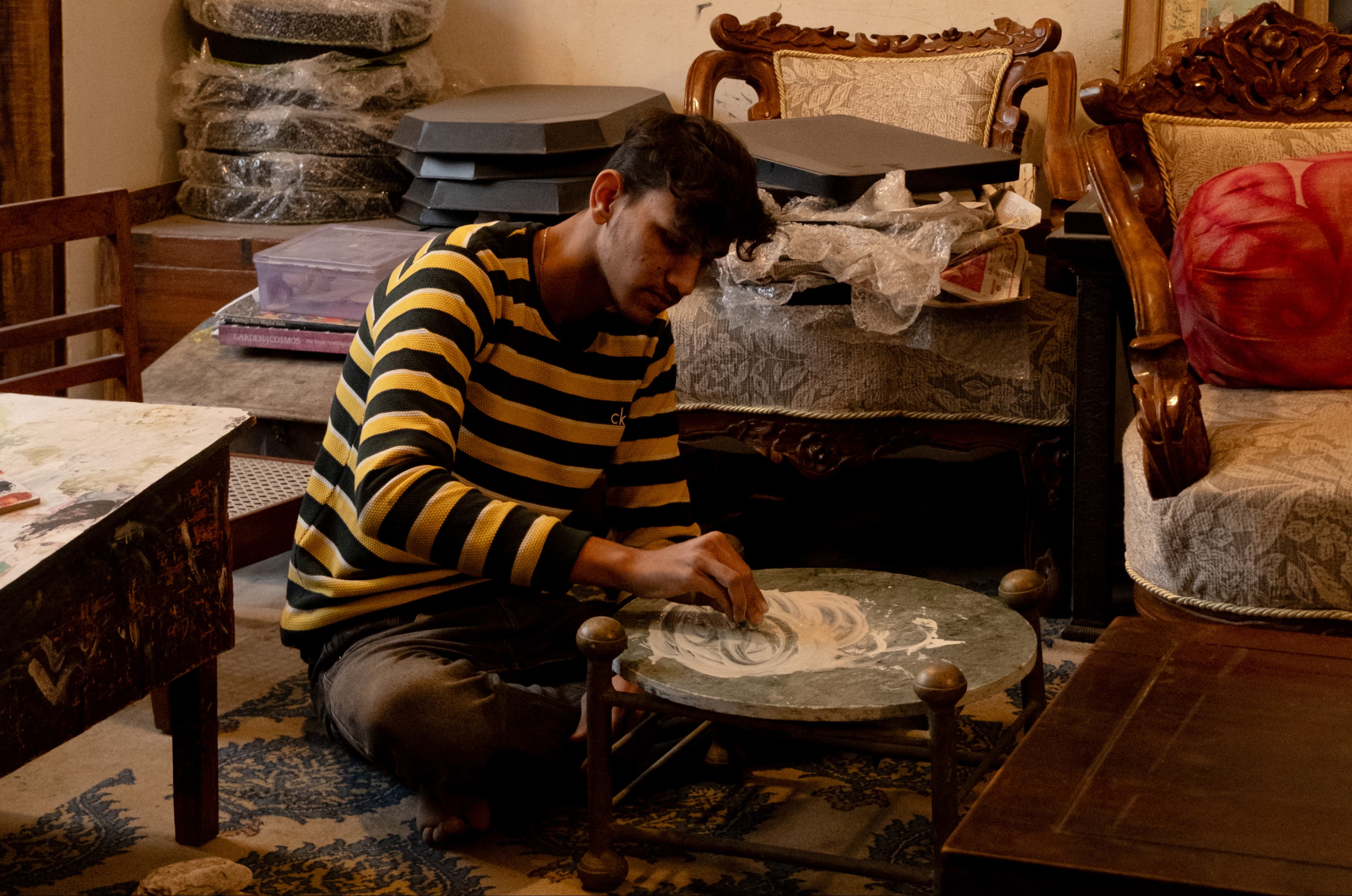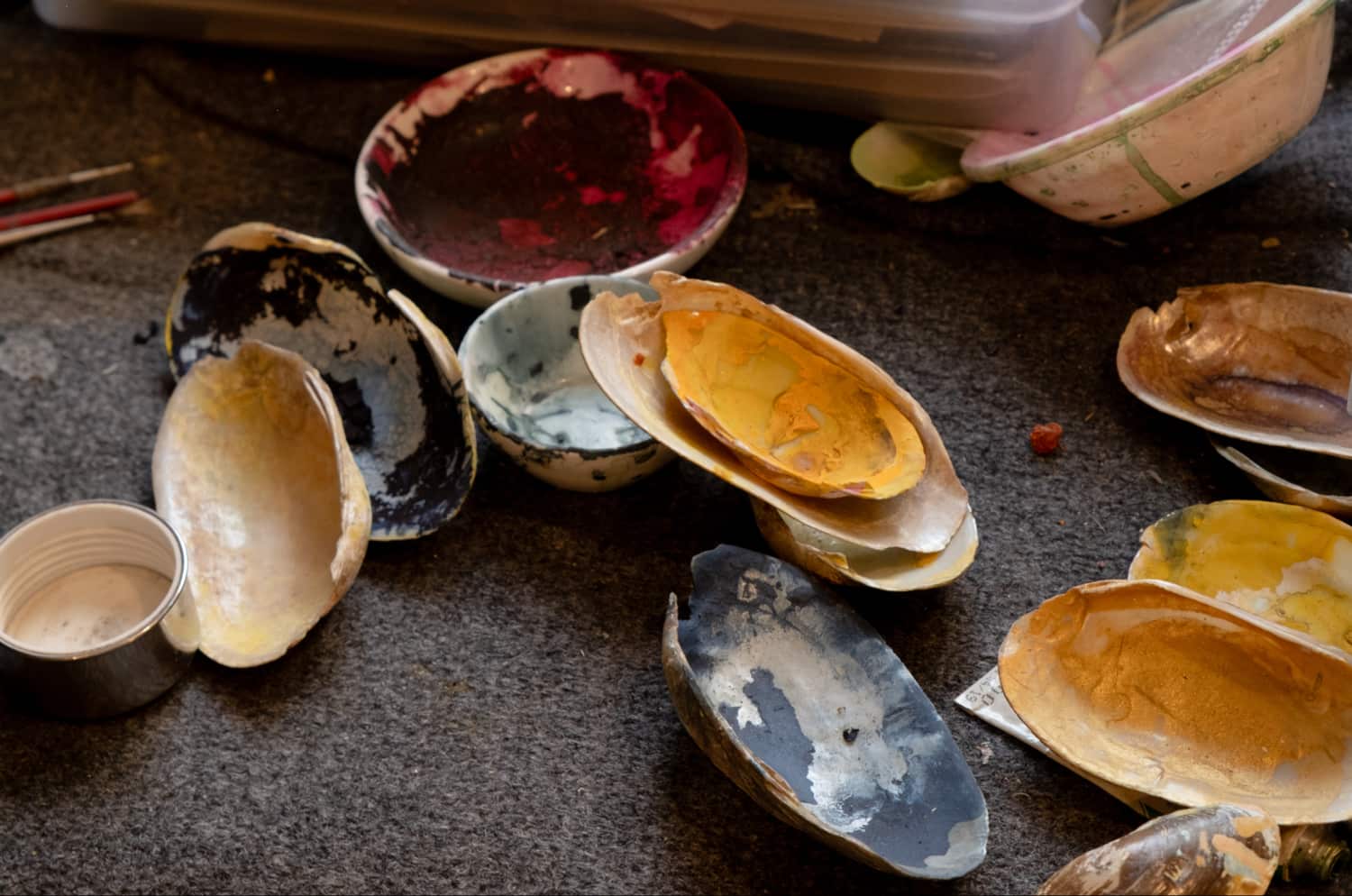
Riyaz Uddin’s world of miniature art is rich with time, context and interpretive potential.
Historically, miniature paintings tended to overflow with detail, a cornucopian testament to an artistic tradition that was part documentary and part hagiography, concentrated into tiny canvases that evoked wonder at their intricacy. Which makes the works of Jaipur-based miniaturist Riyaz Uddin all the more marvellous in contrast. Placed within new contexts, his no-longer-miniature motifs seem to grow in personality and purpose, simmering with stillness and clarity.
Riyaz’s ancestors, he tells me, were originally from Afghanistan, and came to India via Lahore, with Akbar. Their ancestral trade was teaching archery. “Tirandazaan thay,” he says, but then the wars ended, and when Jaipur was founded, they switched to koftgari—damascening decorative weaponry, and subsequently, trading in antiques. When the 1972 Antiquities Act was implemented in India, Riyaz’s father decided to put his experience to use and founded a studio that specialized in miniature painting.
The line from archery to artistry, with a pitstop at decorative metalwork seems fairly straightforward—all three require a clear-sighted focus and rock-steady hands. But the motifs that come out of those steady hands today owe as much to the understanding of antiques as they do to skill. Almost magical in their fluidity, trees, flowers, elephants and kings dance out of the tip of Riyaz’s paintbrushes in a light-footed, fine-lined procession, a tribute to an artistic tradition born of trade routes and time.

Attention to Detail
There are, Riyaz explains, more than 82 styles of miniature painting in India—because with every 100 kilometres, the terrain changed, meaning that the local foliage, the culture, the raw materials, and the patrons changed with it. At 52, Riyaz has now spent almost four decades studying and practicing across styles and mediums, becoming, in the process, a sort of living encyclopaedia of the art.
When he first began learning how to paint in the studio set up by his father, Riyaz was taught to master the three traditional benchmarks of Mughal miniature painting—elephants, hands and horses (“Haathi, haath, aur ghoda,”). The idea back then was that if you could paint these well, you could paint anything. But having spent decades running his own miniature painting studio in a rapidly changing world, Riyaz now has a different set of standards. From a skill perspective, he believes that if you can render the flowers and trees of the Mughal miniature style, you can paint anything. “Because that style has the most intricate detailing,” he points out. But from the bigger-picture view of development and longevity—for both the art and the artist—Riyaz believes that once you’ve mastered the techniques, the ability to experiment and improvise, is much more important. “This is something that a lot of the miniature painting studios here lack,” he says, sadly.

A Tiny Renaissance
Over the decades, his drive to experiment has seen him collaborate with a diverse set of people, courtesy of which he can now easily switch between mediums and materials. “I have painted on wood, steel, iron, leather...and my philosophy is to at least give everything a try,” he says, adding, “My father had a saying, ‘Kuch na hoga, tajurba hoga,’ (‘If nothing else, you will gain experience’)”. This openness to approaches, paired with his light-handed transference of skills makes him, perhaps, one of the last few people equipped to reinvent this artistic tradition.Where traditional Mughal miniatures packed multiple characters with intricate detailing into the frame, Riyaz’s works now allow for emptiness, as if giving his protagonists their time in the spotlight. The negative spaces surround his subjects, but rather than diminishing them, they heighten their small details. A tree is no longer just a tree—it is a motif that measures time in stillness. A tantra-inspired snake becomes movement, rippling across space, bearing the gold of the desert sand on its back. And the portrait of a young Maharaja gazing into the distance becomes a window into a very specific slice of the 20th Century, when Indian royals’ flirtation with art deco resulted in paintings in the grand manner tradition.To be a miniature artist today is to sift meaning out of the detritus of time, to make new histories, and in making them, insist on presence. Riyaz Uddin’s hand-painted trays offer past and present; spareness and intricacy; lines and colours, as two sides of the same coin.
